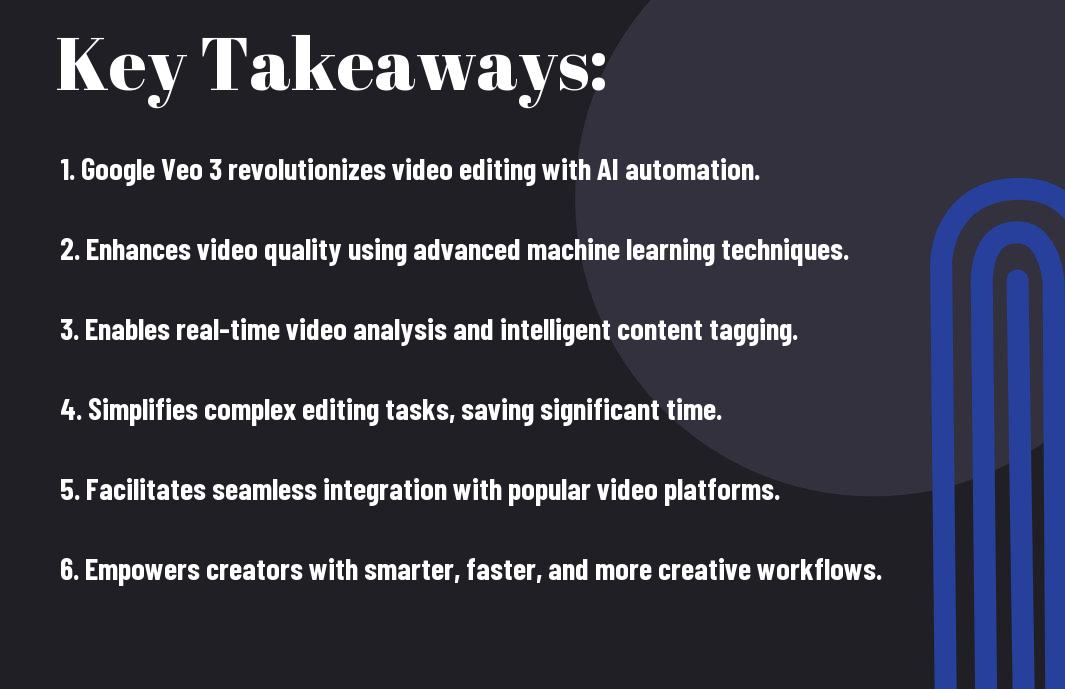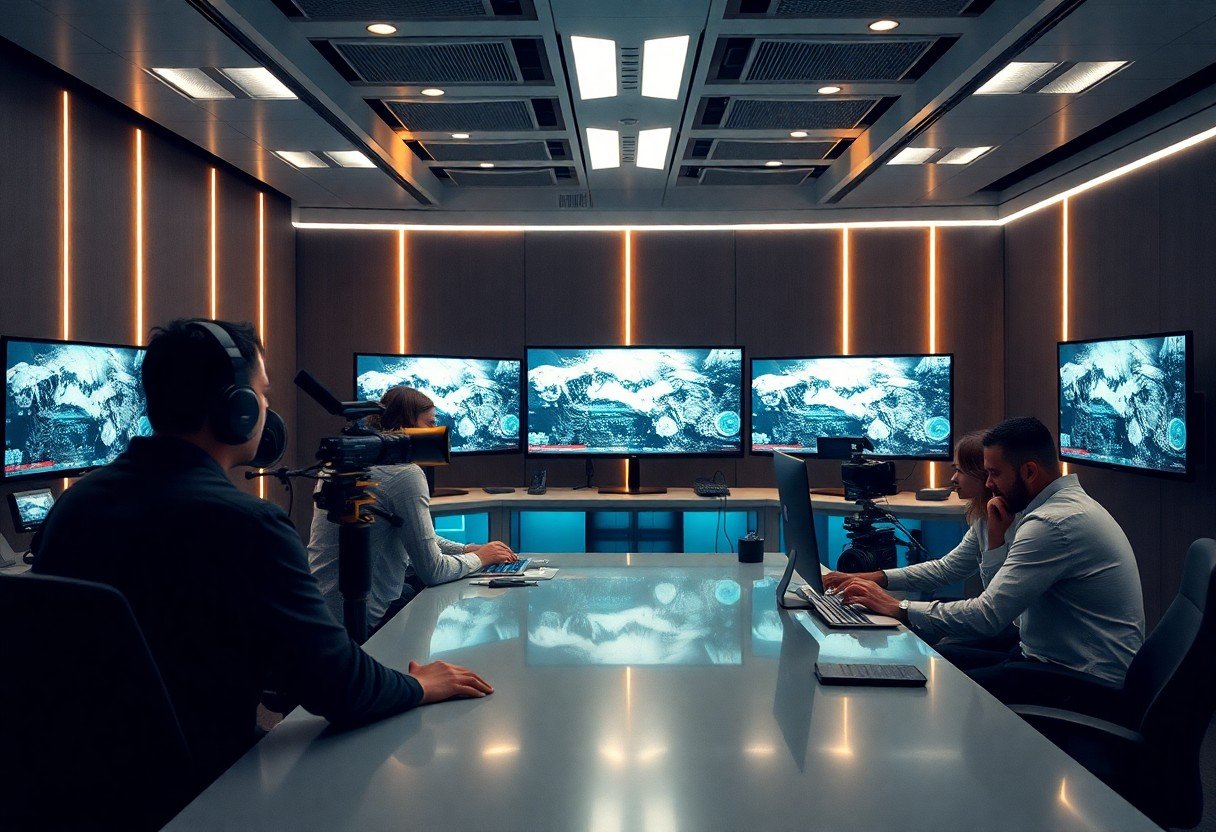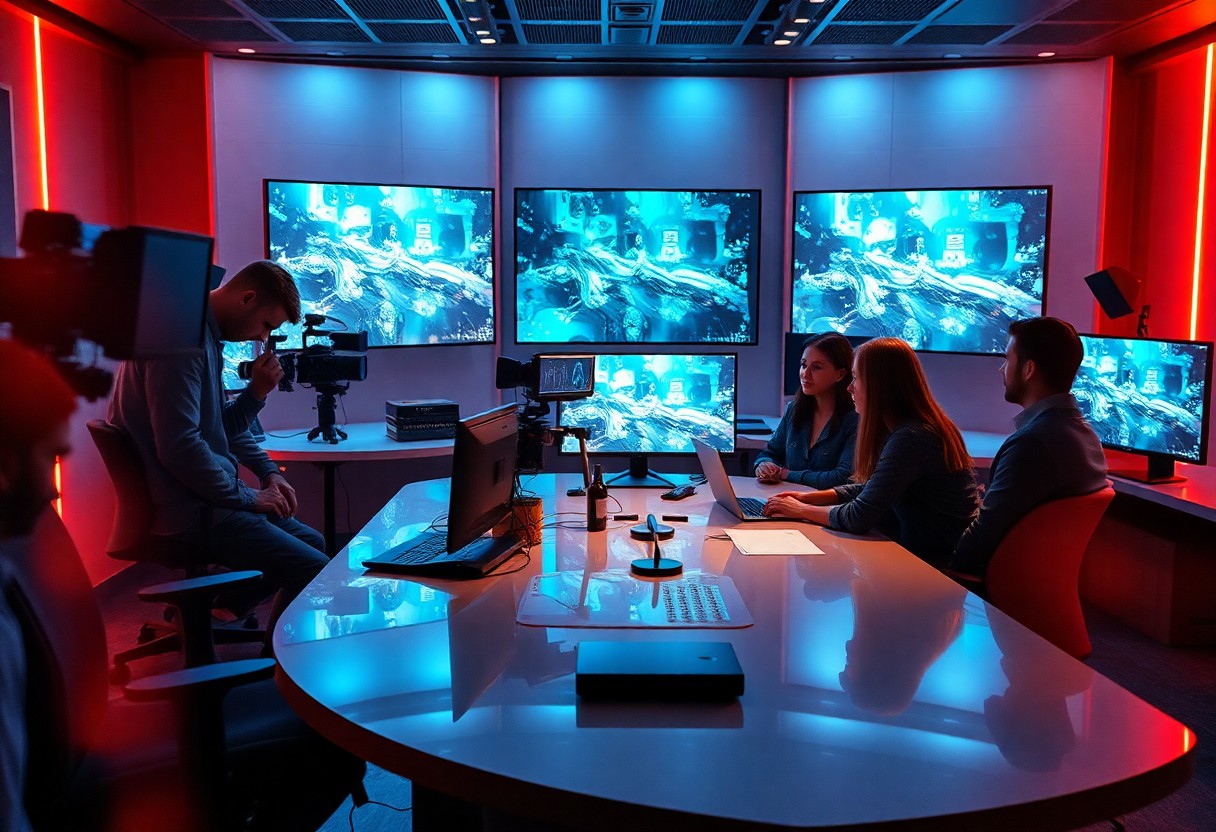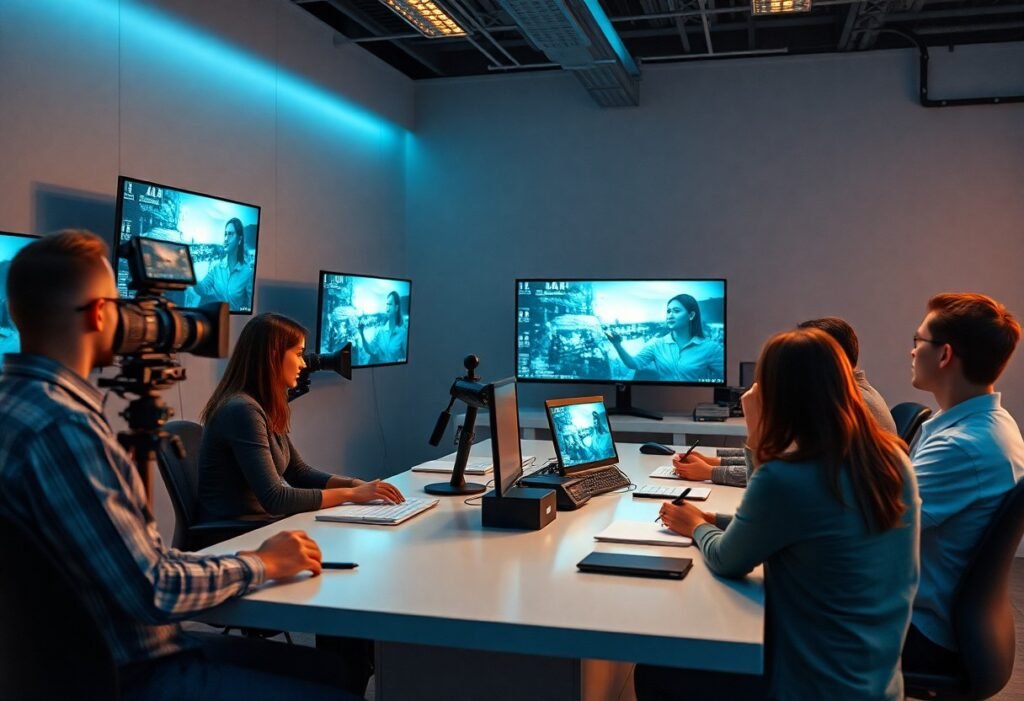AI is transforming how you create and consume video content, and the new Google Veo 3 takes this revolution to a whole new level. With advanced machine learning algorithms, it effortlessly enhances your videos, providing tools that dramatically improve both quality and engagement. As you explore its features, you’ll discover the potential to reach your audience like never before, but be aware of the privacy concerns that come with these innovations. Join us as we dive deeper into how Google Veo 3 is reshaping the video landscape for creators and consumers alike.
Key Takeaways:
- Google Veo 3 leverages advanced AI technologies to enhance video editing, making it faster and more accessible for users of all skill levels.
- The platform introduces innovative features such as automatic content tagging and scene recognition, which streamline the video production process.
- With a focus on collaboration, Google Veo 3 enables seamless sharing and real-time editing among team members, fostering creativity and efficiency in video projects.
The Groundbreaking Technology Behind Google Veo 3
The innovative capabilities of Google Veo 3 are firmly grounded in its state-of-the-art technology, combining sophisticated neural networks and advanced algorithms to deliver unparalleled video editing experiences. As you dive deeper, you’ll discover how each component plays a vital role in redefining video creation and making complex tasks seamless. This system not only learns from your editing patterns but also adapts its workflow to enhance productivity and creativity, providing you with an intuitive tool that evolves with your style.
The Architecture of Neural Networks
The architecture of Google Veo 3’s neural networks is designed to process vast amounts of data efficiently. This layered structure mimics human brain functionalities, utilizing multiple interconnected nodes that analyze video content in real time. As you work with Google Veo 3, the network learns from your preferences, allowing it to suggest edits and enhancements tailored to your unique style.
Advanced Algorithms and Learning Models
Advanced algorithms in Google Veo 3 revolutionize how you interact with video content. These algorithms analyze patterns, predict outcomes, and apply data-driven insights to enhance your editing processes. With continuous learning models, the platform improves its suggestions over time, ensuring that you always receive the most relevant tools for your projects.
| Key Features of Advanced Algorithms | Benefits for Users |
|---|---|
| Real-time data processing | Faster editing times |
| Personalized editing suggestions | Improved creativity and efficiency |
| Predictive analysis of trends | Staying ahead in video content style |
Advanced algorithms and learning models in Google Veo 3 don’t merely run tasks; they enhance your workflow through predictive capabilities that analyze user behavior. By understanding your personal editing style, the platform fine-tunes its algorithm to provide tailored suggestions that match your vision. This approach ensures no two editing experiences are alike, and every project benefits from data-backed insights. The result is a dynamic editing environment that nurtures your creativity while expediting your content creation process.
- Empowers you to create high-quality videos quickly.
- Adapts to your preferences for a personalized experience.
- Offers insights to enhance your storytelling techniques.
| Features Enhancing Your Experience | User Impacts |
|---|---|
| Collaborative editing options | Efficient teamwork and project management |
| Intuitive user interface | Easy navigation and learning curve |
| Integration with other Google tools | Streamlined workflow across platforms |

Transforming Content Creation: A New Era for Creators
The advent of Google Veo 3 unleashed: the first AI video generator with audio propels creators into a new realm of content creation. With its advanced technology, you can now generate high-quality videos in minutes, revolutionizing the way you produce and share your stories. This innovation doesn’t just save time; it opens doors to new levels of creativity, enabling you to focus on your vision while the AI handles the intricate details.
Streamlined Production Processes
By automating many aspects of video production, Google Veo 3 streamlines your workflow significantly. You can easily upload scripts, select styles, and the AI takes care of video assembly, sound, and transitions. This means you can produce polished, professional-quality videos without the long hours typically associated with editing, allowing you to dedicate more energy to conceptualizing innovative ideas.
Enhancing Creative Potential with AI Support
AI assistance from Google Veo 3 enhances your creative process in unparalleled ways. Picture a scenario where you brainstorm an idea, and the AI quickly provides visual suggestions, templates, or even entire storyboards tailored to your theme. With this level of support, you can experiment freely, enabling your unique voice to shine without being hindered by technical constraints.
This AI-backed creativity catalyst adapts to your needs, offering personalized suggestions based on your previous projects and preferences. Imagine working on a marketing campaign and having the AI generate engaging visuals that resonate with your audience, all while you focus on strategy and messaging. It empowers you to push boundaries, explore fresh concepts, and elevate your content beyond traditional limits, creating exceptional experiences for your viewers.

Shifting the Landscape of Digital Marketing
The emergence of Google Veo 3 is reshaping how businesses approach digital marketing by harnessing AI-powered video capabilities. Your strategies now blend innovation with efficiency, allowing for unprecedented creativity and personalization in campaigns. The versatility of video content in driving engagement will no longer remain a secondary option but evolve into a prime strategy that directly influences consumer behavior and brand perception.
Personalized Ad Experiences and Targeting
AI can analyze customer data to craft personalized ad experiences like never before. With your audience’s preferences in mind, Google Veo 3 enables you to tailor video ads that resonate deeply with potential customers, significantly increasing the likelihood of interaction and conversion. Utilizing machine learning algorithms, you can precisely target demographics, leading to higher engagement rates.
Optimizing Video Content for Engagement and Reach
Incorporating Google Veo 3 into your video marketing strategy maximizes engagement and reach. By relying on data-driven insights, you can refine video content, ensuring it aligns with audience interests and trends. Leveraging features like adaptive streaming and AI-generated captioning allows for broader accessibility, elevating your brand’s message across multiple platforms.
Analyzing viewer retention and interaction metrics becomes seamless with Google Veo 3. By identifying what captures audience attention or leads to drop-offs, you can adjust video length, pacing, and content style accordingly. For instance, businesses utilizing A/B testing report up to a 50% increase in viewer engagement post-optimization. Coupled with social media sharing capabilities, your videos can gain organic reach that enhances brand visibility and storytelling effectiveness, transforming casual viewers into loyal customers.

Ethical Considerations in AI Video Innovation
The advancement of Google Veo 3 raises significant ethical considerations that require careful navigation. As businesses and creators embrace AI-generated video content, they must grapple with the implications of authenticity, privacy, and intellectual property rights. These factors are important to maintaining trust and integrity in a rapidly evolving digital landscape. Understanding and addressing these ethical dilemmas will shape how you implement and utilize AI video technologies in your strategies.
The Dilemma of Authenticity vs. Automation
The tension between authenticity and automation compounds as AI-generated content continues to proliferate. You may find that while automation can enhance efficiency and creativity, it often risks compromising the genuine connection audiences seek. Striking a balance between automated video generation and authentic storytelling is crucial, as customers increasingly value real engagement over polished perfection.
Addressing Privacy and Intellectual Property Issues
Your responsibility also extends to navigating the complex landscape of privacy and intellectual property. As you create AI-generated content, understanding the legal implications of using copyrighted material and the data privacy of individuals featured in videos is paramount. The right strategies ensure that you not only comply with regulations but also foster trust with your audience.
Specific challenges arise with AI technology’s ability to replicate styles or voice patterns, potentially infringing on the intellectual property rights of creators. In instances where video content relies on recognizable artifacts or personal likenesses, obtaining consent becomes important. Additionally, data privacy laws, such as GDPR, necessitate transparency regarding how viewer data is utilized in video creation and distribution. By adopting transparent practices and securing proper permissions, you not only fortify your ethical stance but also build a more respectful and sustainable relationship with your audience.
The Future of Visual Storytelling: Industry Predictions
The landscape of visual storytelling is on the brink of transformative change as Google Veo 3 leads the charge into a new era of creativity and marketing. With its advanced AI capabilities, it’s making high-quality video production accessible, enabling brands to adapt quickly to evolving consumer demands. Expect an increase in personalized and dynamic content that engages audiences like never before, setting new standards for the industry as you craft and deliver your narratives.
Prospective Developments and Tech Integration
The integration of AI technologies with existing creative tools will enhance video production processes and allow for seamless collaboration among teams. New features like real-time editing and automated content analysis will become standard practices, helping you to maximize efficiency while maintaining quality. The rise of augmented reality (AR) and virtual reality (VR) will also play a significant role, offering immersive storytelling experiences that captivate audiences and deepen their engagement.
Evolving Roles for Creators and Marketers
Your role as a creator or marketer is set to evolve significantly in response to these technological advancements. Traditional methods of content creation are being replaced with data-driven strategies that prioritize audience preferences and iteratively adjust based on performance metrics. This shift requires you to become adept at analyzing viewer behavior, leveraging AI tools for insights, and integrating visual storytelling with multichannel marketing to maximize reach and impact.
As you adapt to these changes, it’s vital to embrace a hybrid skill set that combines creativity with analytical thinking. While your storytelling abilities remain foundational, understanding how to utilize data-driven insights generated by platforms like Google Veo 3 will empower you to produce personalized content that resonates on a deeper level with your audience. The integration of automation in content creation means you’ll spend less time on repetitive tasks, allowing more room for creative exploration and innovative approaches to problem-solving in your campaigns.
To wrap up
Upon reflecting, you can see that Google Veo 3 represents a significant leap in video technology, empowering you to create and share content like never before. Its advanced AI capabilities streamline the production process, making it easier for you to harness the potential of video in your communication strategies. As this innovative platform continues to evolve, staying informed about its updates will be vital for maximizing your creative possibilities and maintaining a competitive edge in a rapidly changing digital landscape.
Marcelo Miranda is a content editor and technology contributor at DigitalVistaOnline.com, specializing in digital literacy, tech tutorials, and online privacy. With a background in digital communication and SEO, he helps simplify complex tools for everyday users. Marcelo also supports content strategy and editorial planning, promoting clear, inclusive, and accessible tech knowledge for readers of all backgrounds.






